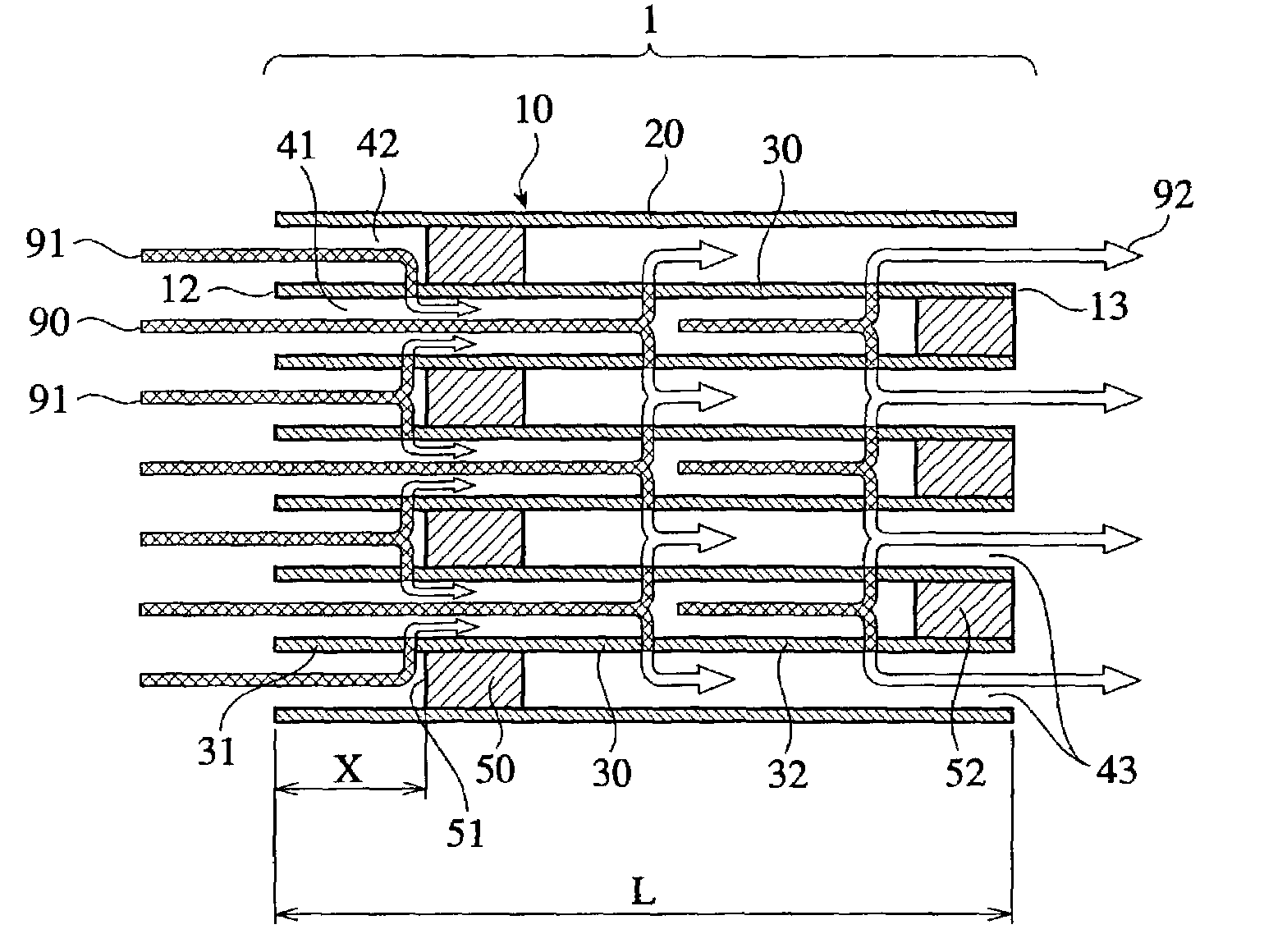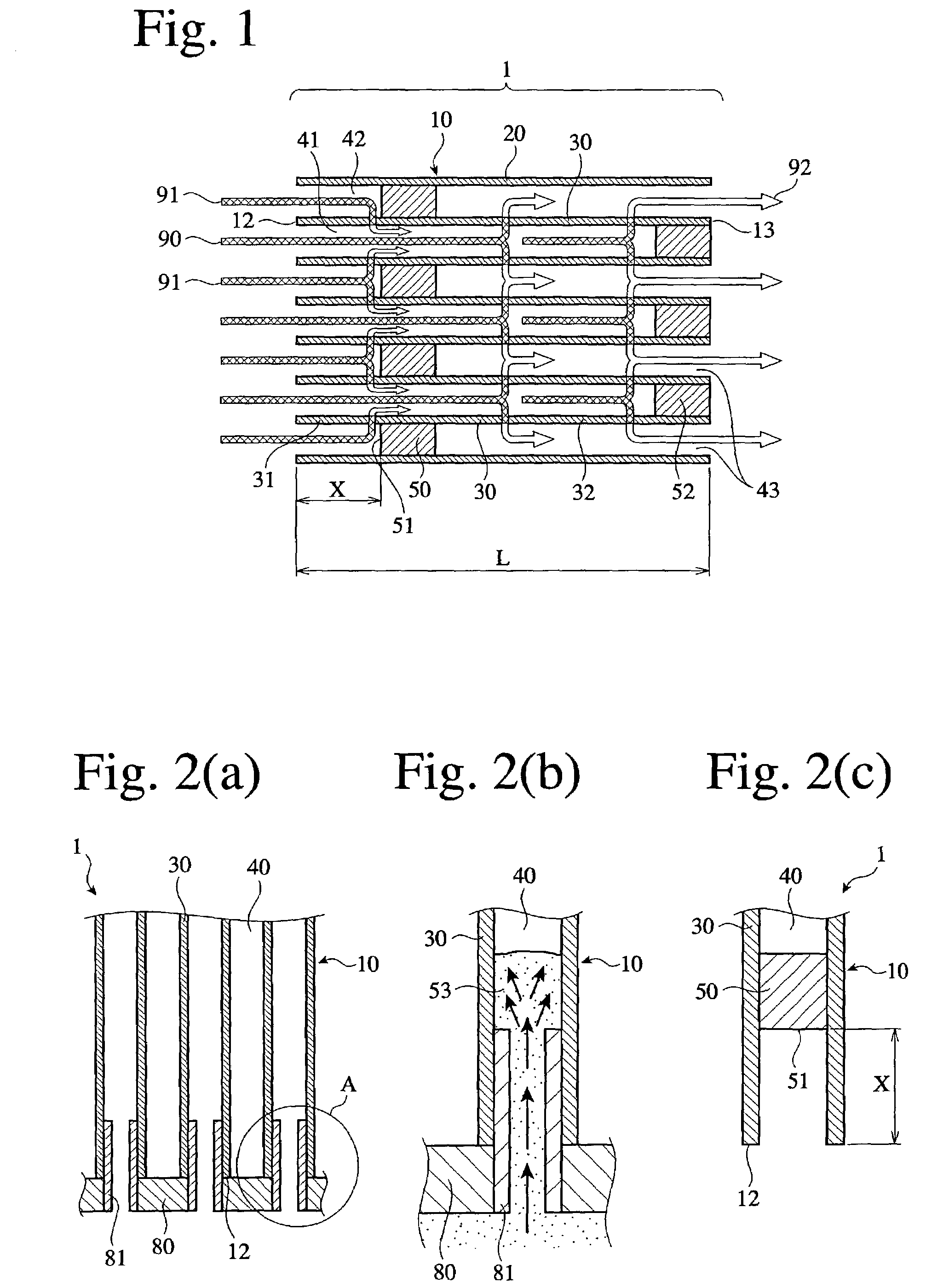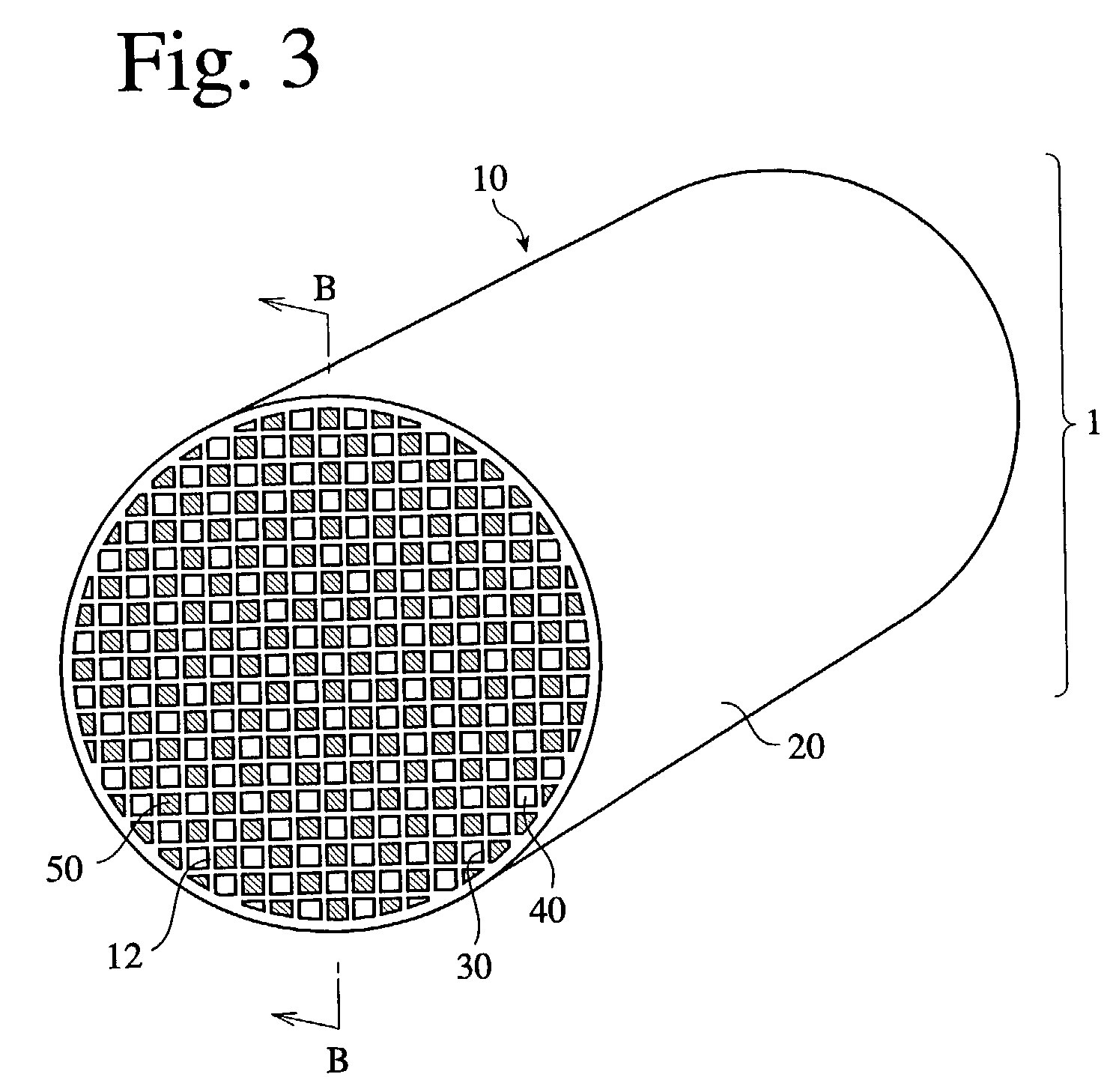Ceramic honeycomb filter and exhaust gas-cleaning method
a honeycomb filter and filter technology, applied in the direction of machines/engines, chemical/physical processes, metal/metal-oxide/metal-hydroxide catalysts, etc., can solve the problems of reducing the output of the engine, difficult to uniformly control the temperature inside the honeycomb filter, and long flow path direction, so as to prevent the breakage and melting of the filter, avoid the effect of pressure loss increase and stable us
- Summary
- Abstract
- Description
- Claims
- Application Information
AI Technical Summary
Benefits of technology
Problems solved by technology
Method used
Image
Examples
example 1
[0063]A starting material powder for cordierite comprising kaolin powder, talc powder, silica powder, aluminum hydroxide powder and alumina powder as main components was prepared. The starting material powder had a composition (by mass) comprising 47–53% of SiO2, 32–38% of Al2 O3, and 12–16% of MgO as main components, and additionally inevitable impurities of CaO, Na2O, K2O, TiO2, Fe2O3, PbO and P2O5 in an amount of 2.5% or less in total. A molding aid and a pore-forming agent were added to this starting material powder, and water was added to carry out sufficient mixing to prepare an extrudable paste.
[0064]The paste was extrusion-molded to a green body having a honeycomb structure comprising an outer wall 20, and partition walls 30 defining a plurality of flow paths 40 each having a square cross section. After drying, the green body was calcined to form a porous honeycomb structure 10 having a diameter of 267 mm and an entire length L of 300 mm, the partition walls 30 having a pitc...
example 2
[0074]Honeycomb filters 1 having the structure shown in FIG. 1 (Samples 7 and 8) were produced in the same manner as in Example 1. Each honeycomb filter 1 had a diameter of 267 mm and a length of 300 mm, and its partition walls 30 had a pitch of 1.5 mm, a thickness of 0.3 mm and a porosity of 65%. The distance X from the inlet-side opening end 12 of the honeycomb filter 1 to the front end surface 51 of the plug 50 was 49.8 mm (Sample 7) and 96.3 mm (Sample 8), respectively.
[0075]In each Sample 7, 8, the surfaces and pores of the plugs 50 and the downstream partition wall portions 32 carried a catalyst comprising Pt, cerium oxide and activated alumina. The amount of Pt in the catalyst carried was 1 g / L. A catalyst (Pt: 4 g / L) having a higher Pt concentration than the above catalyst was carried on the surfaces and pores of the partition wall portions 31 upstream of the plugs 50.
[0076]The durability test of each of the resultant ceramic honeycomb filters 1 was carried out in the same m...
example 3
[0079]Honeycomb filters 1 of Samples 9 and 10 each having the structure shown in FIG. 1 were produced in the same manner as in Example 1. Each honeycomb filter 1 had a diameter of 267 mm and a length of 300 mm, and its partition walls 30 had a pitch of 1.5 mm, a thickness of 0.3 mm and a porosity of 65%. In the honeycomb filter 1, the distance X from the inlet-side opening end 12 to the front end surface 51 of the plug 50 was 49.8 mm (Sample 9) and 96.3 mm (Sample 10).
[0080]In each Sample 9, 10, a catalyst 1 comprising Pt, cerium oxide and activated alumina was carried on the surfaces and pores of the partition wall portions 31 upstream of the plugs 50. Thereafter, a catalyst containing lanthanum, cesium and vanadium was carried on the surfaces and pores of the plugs 50 and the downstream partition wall portions 32. This indicated that the catalyst carried on the partition wall portions 31 upstream of the inlet-side plugs 50 had higher activity than the catalyst carried on the downs...
PUM
| Property | Measurement | Unit |
|---|---|---|
| thickness | aaaaa | aaaaa |
| porosity | aaaaa | aaaaa |
| temperature | aaaaa | aaaaa |
Abstract
Description
Claims
Application Information
 Login to View More
Login to View More - Generate Ideas
- Intellectual Property
- Life Sciences
- Materials
- Tech Scout
- Unparalleled Data Quality
- Higher Quality Content
- 60% Fewer Hallucinations
Browse by: Latest US Patents, China's latest patents, Technical Efficacy Thesaurus, Application Domain, Technology Topic, Popular Technical Reports.
© 2025 PatSnap. All rights reserved.Legal|Privacy policy|Modern Slavery Act Transparency Statement|Sitemap|About US| Contact US: help@patsnap.com



